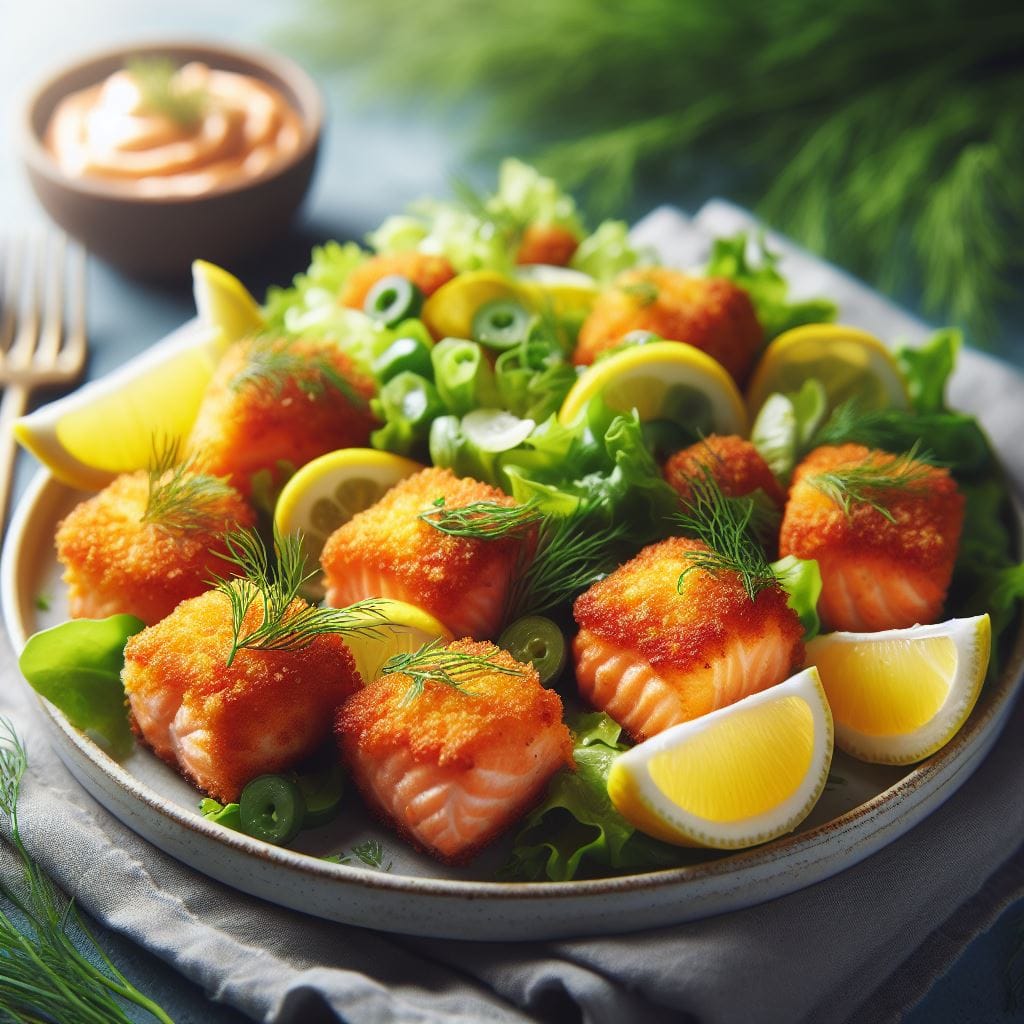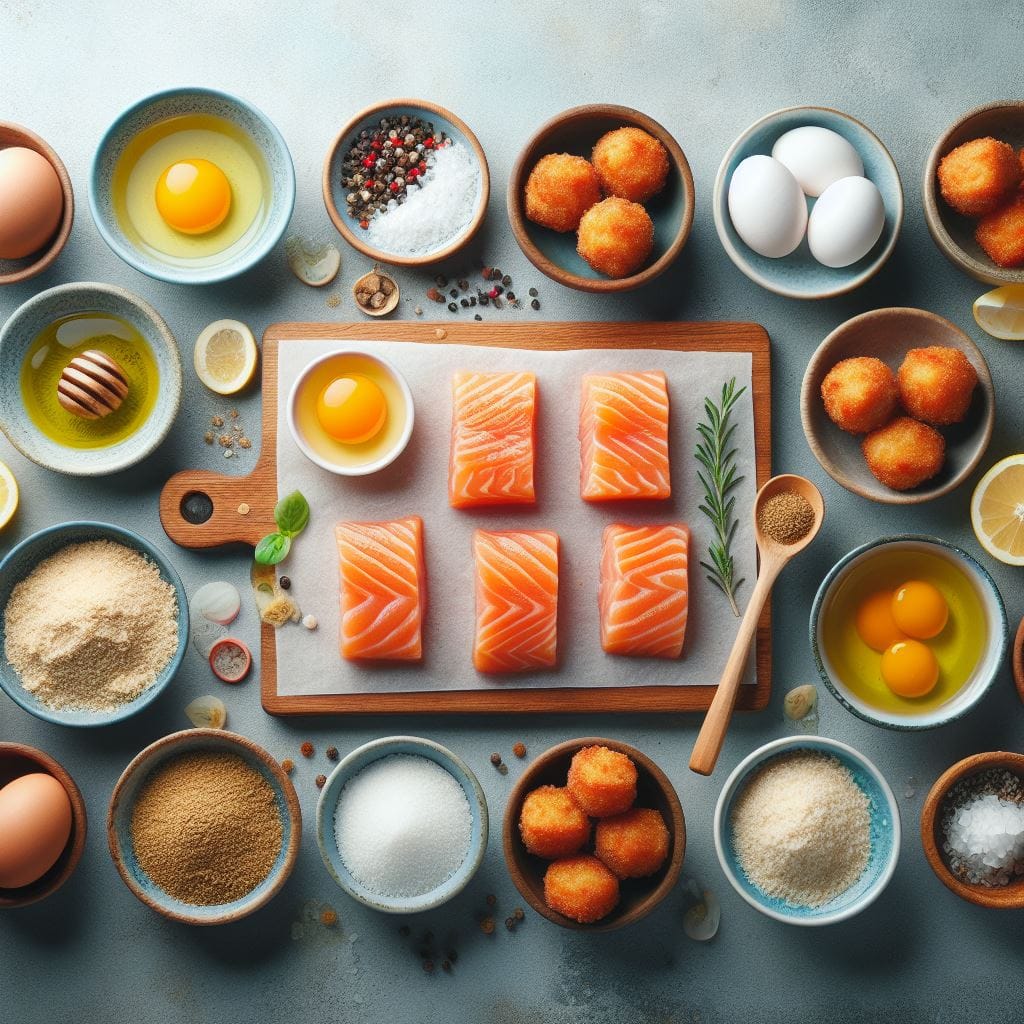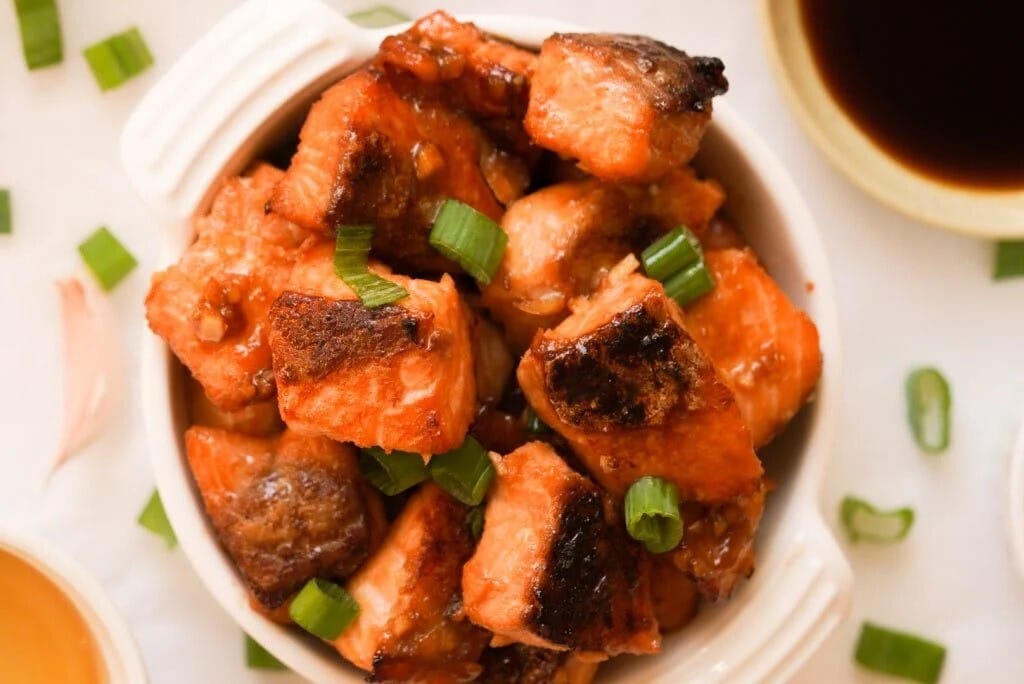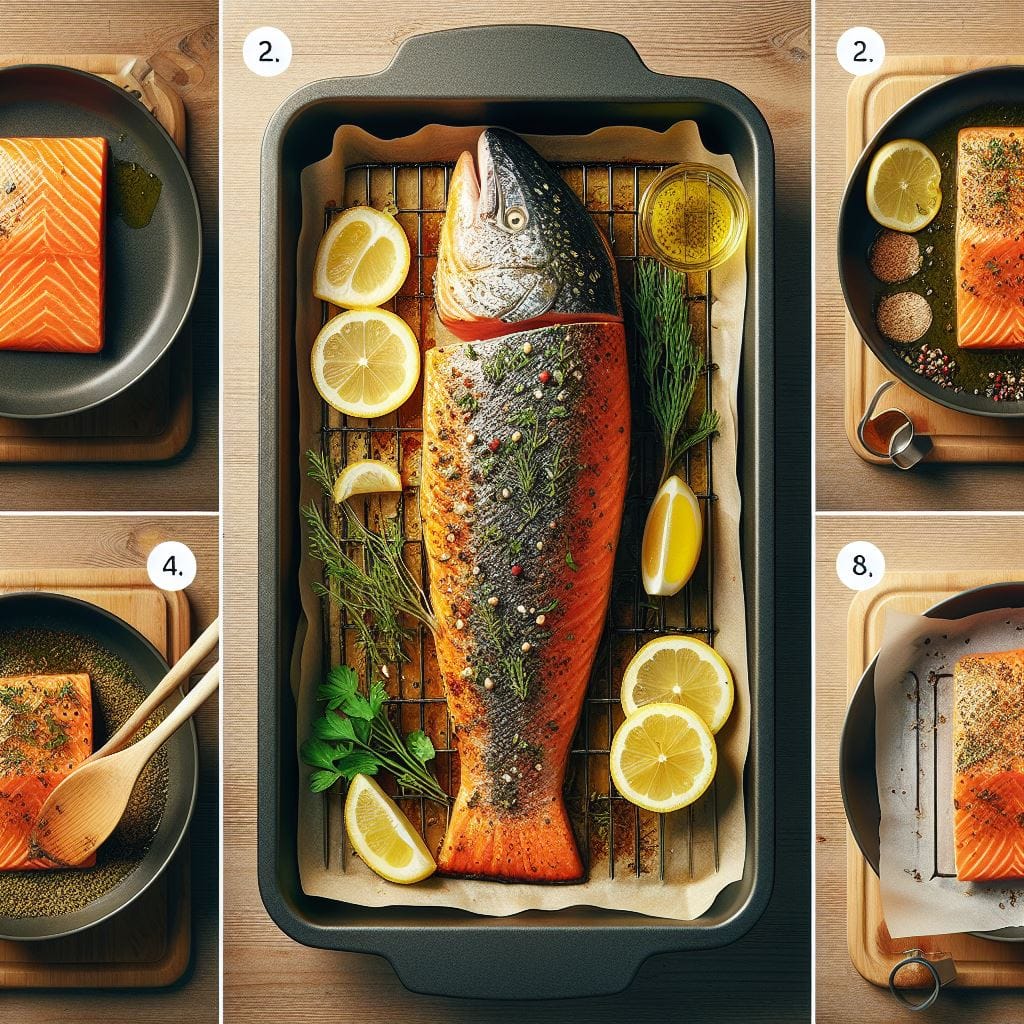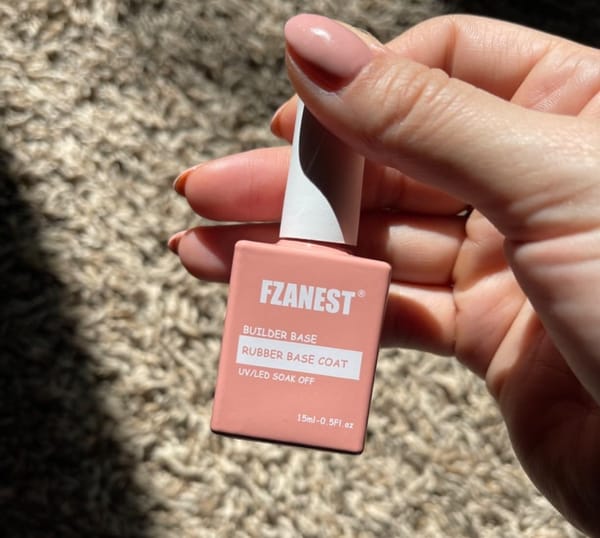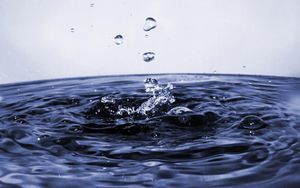Key Takeaways:
- Learn the essential steps to broil salmon fillets to perfection.
- Discover tips and tricks for seasoning and achieving the ideal texture.
- Understand how to store and repurpose leftover broiled salmon for future meals.
Broiling salmon is a quick and healthy way to prepare a delicious meal that's rich in omega-3 fatty acids, polyunsaturated fat, and monounsaturated fat. Whether you're a seasoned chef or a cooking novice, this comprehensive guide will walk you through the process of creating a restaurant-quality meal with salmon in the oven.
Selecting Your Salmon
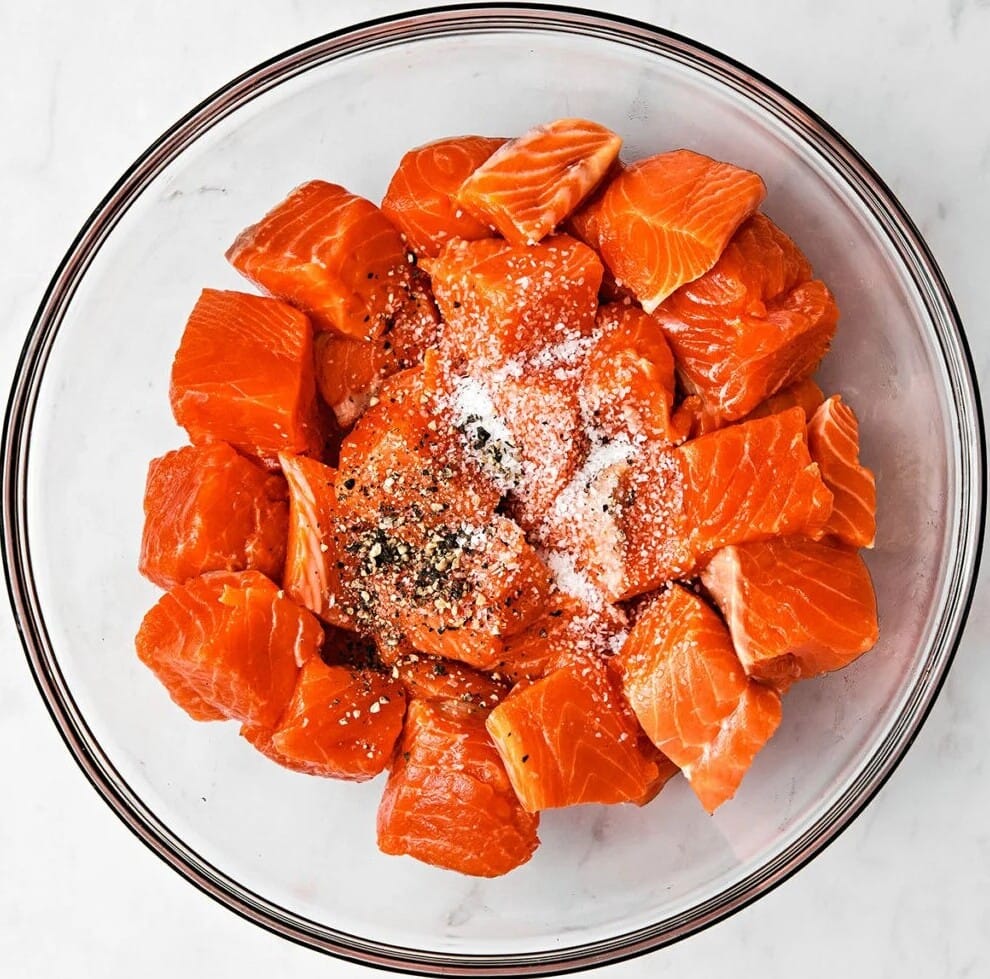
When it comes to cooking salmon, the type of salmon you choose can impact the flavor and texture of your dish. Atlantic salmon is a popular choice for its rich taste and buttery texture. Look for skin-on salmon fillets, as the skin helps to keep the fish moist during the broiling process and can be easily removed after cooking if desired.
Preparing the Salmon Fillets
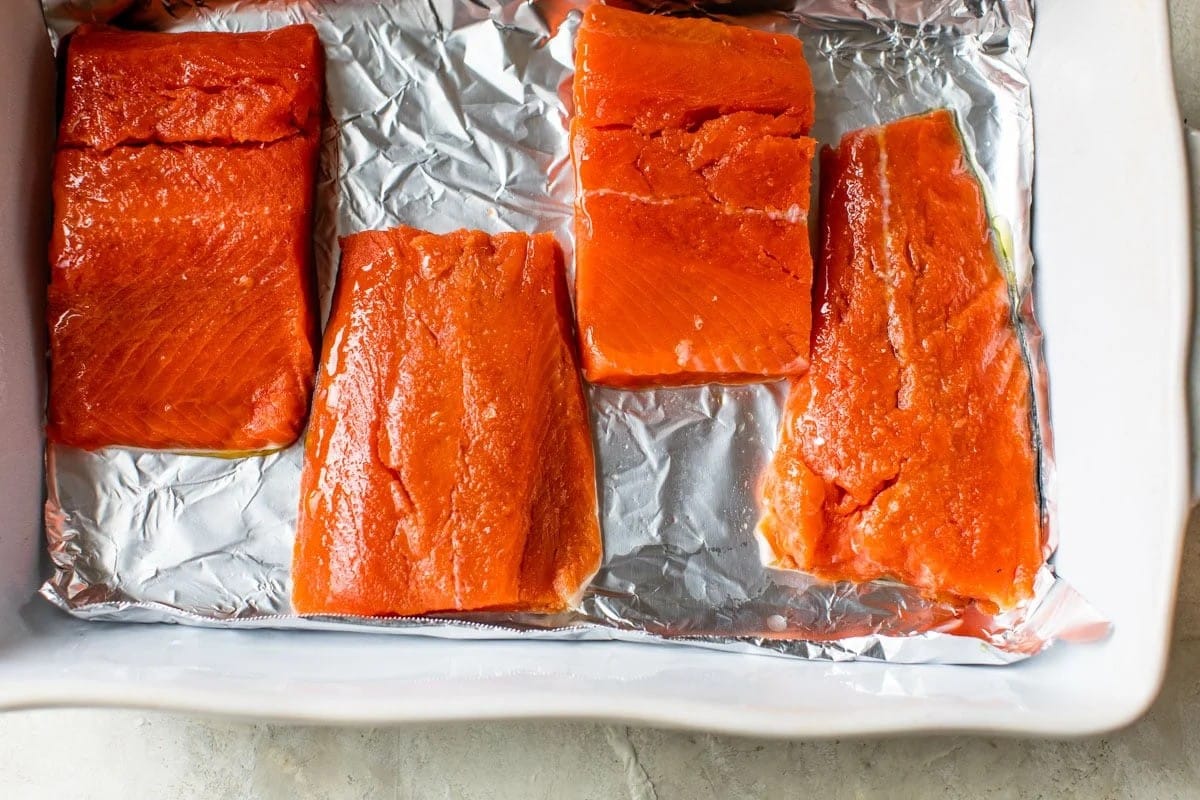
Before you cook salmon, it's important to prepare it properly. If you're using frozen salmon, ensure it's fully thawed. Pat the salmon dry with paper towels to remove excess moisture. This step is crucial for achieving perfectly crispy skin and flaky salmon.
The Broiling Method
Broiling salmon depends on high heat to cook the fish quickly. Preheat your broiler and position the oven rack so that the top of the salmon will be about 4-6 inches from the heat source. This distance allows the salmon to cook evenly without burning.
Seasoning Your Salmon
A simple recipe for a seasoning blend might include kosher salt, black pepper, garlic powder, onion powder, smoked paprika, and a touch of brown sugar for a hint of sweetness. For an extra kick, a thin layer of soy sauce or lemon juice can add a tangy flavor that complements the salmon's natural taste.
Using the Right Cookware
A foil-lined baking sheet or a rimmed baking sheet brushed with extra virgin olive oil or avocado oil is ideal for broiling salmon. The oil helps to prevent sticking and adds a subtle flavor to the fish. Aluminum foil not only makes cleanup easier but also helps to reflect heat and cook the salmon evenly.
Placing the Salmon in the Oven
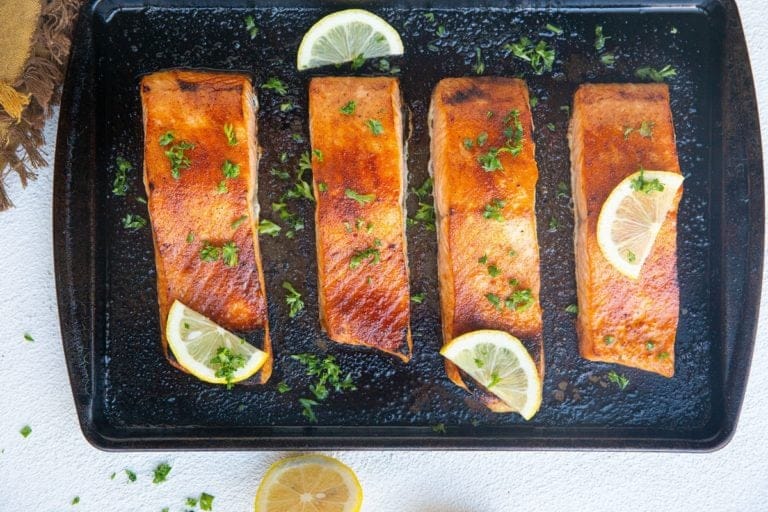
Place the salmon on the prepared baking sheet, skin side down. If you prefer your salmon cooked with a slightly dark broiled salmon exterior, you can brush the top with a mixture of oil and seasonings to encourage browning.
Pairing Sides with Your Broiled Salmon
When it comes to creating a restaurant-quality meal at home, the sides you choose to accompany your broiled salmon filets are just as important as the fish itself. Think about textures and flavors that will complement the rich, oily nature of the salmon, which is packed with omega-3 fatty acids. A crisp green salad dressed with a light vinaigrette offers a refreshing contrast, while roasted vegetables can add a caramelized sweetness that pairs wonderfully with the savory notes of the cooked salmon. Remember, the key to a balanced plate is variety, so don't be afraid to experiment with different side dishes to find your perfect match.
Now, if you're aiming for a heartier companion to your salmon, consider a foil-lined baking sheet of seasoned baby potatoes, ready to be popped into the oven while your salmon cooks. Or, for a low-carb option, a medley of sautéed greens like spinach or kale, cooked over medium-low heat with a touch of garlic, can be both nutritious and satisfying. These easy recipe additions not only boost the nutrition serving of your meal but also ensure that every bite is a symphony of flavors that make this recipe a weeknight staple.
Marinating Techniques for Flavorful Salmon
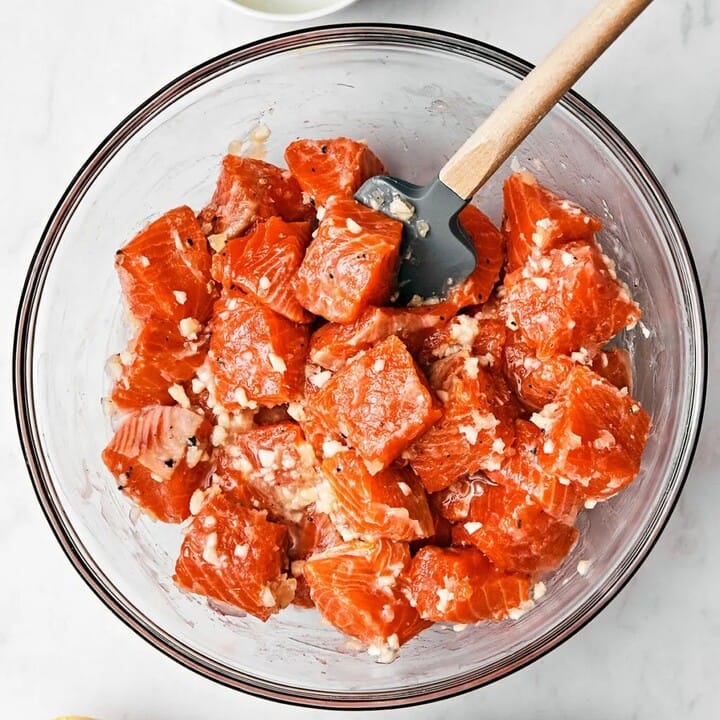
The first step in marinating salmon for maximum flavor involves selecting the right marinade. A basic marinade typically consists of an acid (like lemon juice or vinegar), oil, and seasonings. The acid works to tenderize the salmon and allows the flavors to seep in, while the oil assists in keeping the salmon moist during the cooking process. Seasonings, of course, are there to provide that delicious flavor.
To prepare the salmon for marinating, rinse it under cold water and pat it dry using paper towels. This will enable the marinade to adhere better to the salmon. Once ready, place the salmon in a non-reactive container such as glass, ceramic, or plastic. Avoid metal containers as they can react with the acid in the marinade, resulting in a metallic taste.
When marinating salmon, be mindful not to over-marinate. Salmon is a delicate fish that doesn't require a long marinating time. Generally, 30 minutes to an hour is sufficient. Over-marinating can result in the acid starting to cook the salmon, leading to a tough and dry outcome. While the salmon is marinating, remember to turn it occasionally to ensure all sides are evenly coated. After marinating, discard any leftover marinade that has been in contact with raw salmon to avoid cross-contamination.
Incorporating Omega Fatty Acids into Your Diet with Broiled Salmon
Omega fatty acids are essential nutrients that play a crucial role in maintaining heart health, brain function, and overall well-being. Broiled salmon is an excellent source of these beneficial fats, particularly omega-3 fatty acids, which are known for their anti-inflammatory properties. When you choose to broil salmon, you're not just preparing a delicious meal; you're also making a health-conscious decision that can contribute to a balanced diet. Including broiled salmon in your weekly meal plan is a tasty way to ensure you're getting a good dose of these important nutrients.
The beauty of broiling salmon is that it preserves the integrity of omega fatty acids, unlike some cooking methods that can degrade these sensitive compounds. By using high heat for a short period, broiling helps to retain the salmon's natural oils, which are rich in omega-3s. This method of cooking not only enhances the flavor but also maximizes the health benefits. To boost your intake, consider adding broiled salmon to salads, sandwiches, or as a standalone entrée accompanied by a variety of vegetables, which can help with the absorption of these essential fats.
The Role of Omega Fatty Acids in Broiled Salmon Recipes
When crafting recipes for broiled salmon, it's important to consider how different ingredients can complement the omega fatty acids present in the fish. For instance, pairing salmon with a side of leafy greens dressed in a light vinaigrette can enhance the absorption of omega-3s, as the fats are soluble in the oils found in the dressing. Additionally, incorporating nuts or seeds, which also contain omega fatty acids, can add a crunchy texture and boost the nutritional profile of your meal. By thoughtfully selecting ingredients, you can create a synergistic effect that not only tastes great but also maximizes the health benefits of your dish.
Moreover, understanding the role of omega fatty acids in broiled salmon can help you communicate the value of your recipes to health-conscious diners. Omega-3 fatty acids, particularly EPA and DHA found in salmon, are linked to reduced risk of chronic diseases and improved mental health. When sharing your broiled salmon creations, highlight these benefits to appeal to those looking to improve their diet. Whether you're cooking for yourself, your family, or guests, emphasizing the presence of omega fatty acids in your broiled salmon recipes can make your dishes even more enticing and nutritionally rewarding.
Crafting the Perfect Glaze for Baked Salmon
A glaze can elevate your baked salmon from a simple home-cooked meal to a dish that rivals those served in fine dining establishments. The secret to a perfect glaze lies in its consistency and flavor balance. Aim for a mixture that's thick enough to cling to the salmon filet but not so heavy that it overwhelms the fish's delicate flavor. A combination of sweet and savory elements like honey and soy sauce, or maple syrup and mustard, can create a tantalizing contrast that will tantalize your taste buds.
Applying the glaze is just as important as making it. Brush your salmon with the glaze a few more minutes before the broiling process ends, allowing the heat to caramelize the sugars for a glossy and appealing finish. Keep a close eye on your oven door during this stage, as the glaze can go from perfect to burnt in a short time. For those who prefer to cook on the stovetop, you can also achieve a similar effect by cooking the salmon on medium-low heat in a pan, glazing it as it cooks. And remember, this post may contain affiliate links for glazing brushes and other cookware to help you serve salmon with that irresistible sheen.
The Health Benefits of Broiled Salmon
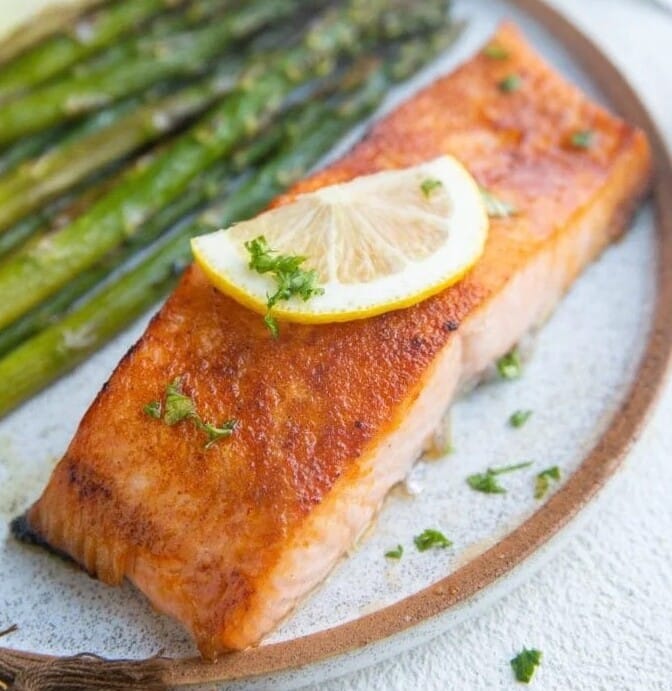
Diving into the health aspect of enjoying broiled salmon, it's not just about the delectable flavors—there's a wealth of nutritional benefits too. Salmon is renowned for its high content of omega-3 fatty acids, which are essential for maintaining heart health and reducing inflammation. Moreover, a single serving of salmon is a powerhouse of protein, vitamins, and minerals, all while being relatively low in saturated fat. This makes it an excellent choice for those looking to maintain a balanced diet without sacrificing taste.
But let's not stop there; did you know that the way you cook salmon can also impact its health benefits? Broiling is a quick cooking method that doesn't require much-added fat, preserving the natural goodness of the fish. By keeping the skin on salmon while it cooks, you can also retain more of its natural oils, which are brimming with those beneficial fatty acids. So next time you're pondering over dinner options, remember that broiling salmon is not just an easy recipe, but a smart choice for your health too.
Broiler Temperature and Cooking Time
The broiler temperature is typically set to high, and the cooking time for broiled salmon depends on the thickness of the fillets. Generally, it takes about 8-10 minutes for the salmon to become perfectly broiled salmon. Keep a close eye on it, as the high heat can quickly go from perfectly done to overcooked.
Serving Your Broiled Salmon
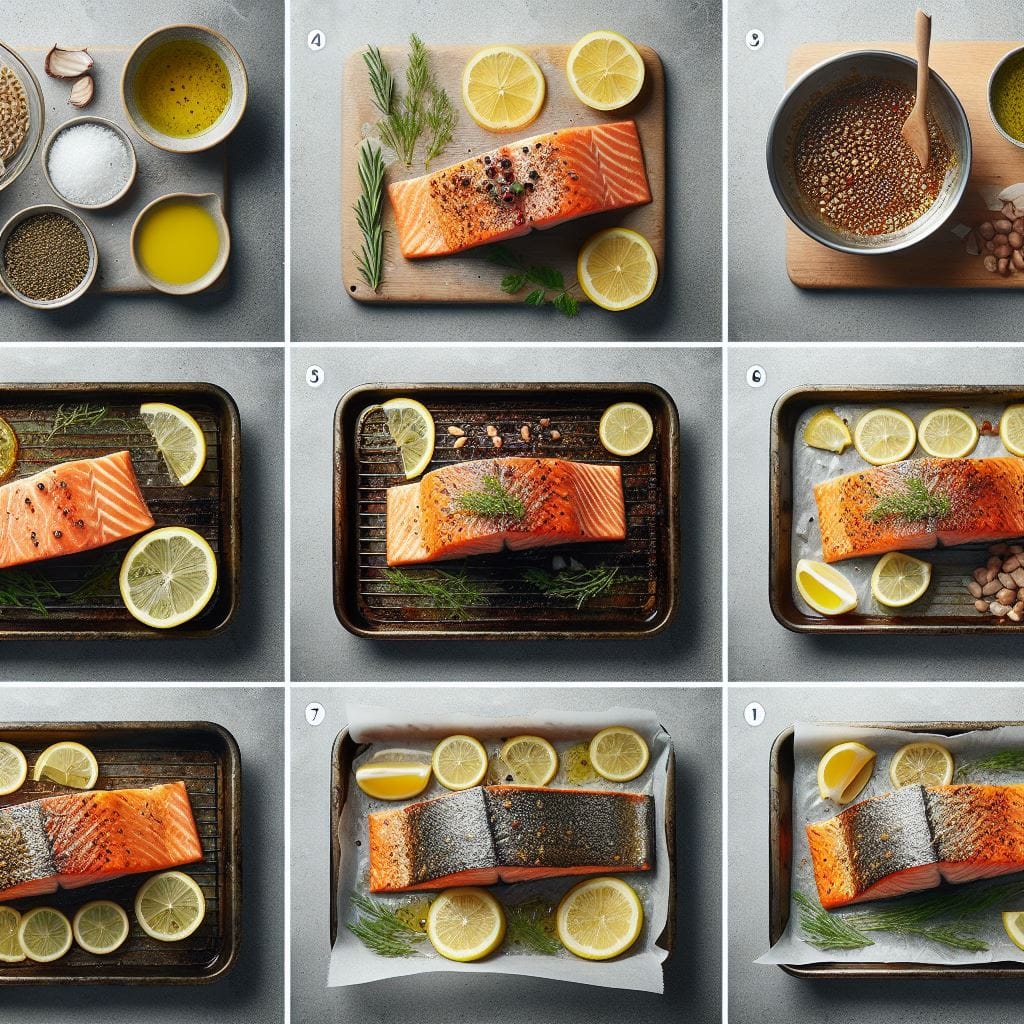
Serve broiled salmon with a sprinkle of fresh herbs, green onions, or a squeeze of lemon juice to enhance its flavor. It makes for a healthy dinner that's absolutely delicious and can be paired with a variety of sides.
Storing Leftover Salmon
Leftover broiled salmon, cooked to perfection, can be conveniently stored in an airtight container in the refrigerator. Its rich flavor and tender texture make it an excellent addition to a variety of dishes. Whether you want to enhance your salads with a protein boost, create a delicious salmon pasta, or whip up some delectable salmon cakes, this versatile leftover will surely elevate your culinary experience. Enjoy the mouthwatering flavors of this savory seafood for a delightful meal the next day!
Reheating Leftover Salmon
To reheat leftover salmon while preserving its moisture, it is recommended to bake it in the oven at medium-low heat, typically around 325 degrees Fahrenheit. This gentle heat will help prevent the salmon from drying out, ensuring that it remains tender and flavorful. Alternatively, you can also opt to heat the salmon in a pan, preferably covered with aluminum foil to retain its moisture. By following these methods, you can enjoy your reheated salmon with the same deliciousness as when it was freshly cooked.
Making the Most of Your Broiled Salmon
Broiled salmon recipe variations are endless. Try glazing your salmon with a mixture of honey and soy sauce for an Asian twist, or create a Mediterranean flavor with a blend of olive oil, garlic, and fresh herbs.

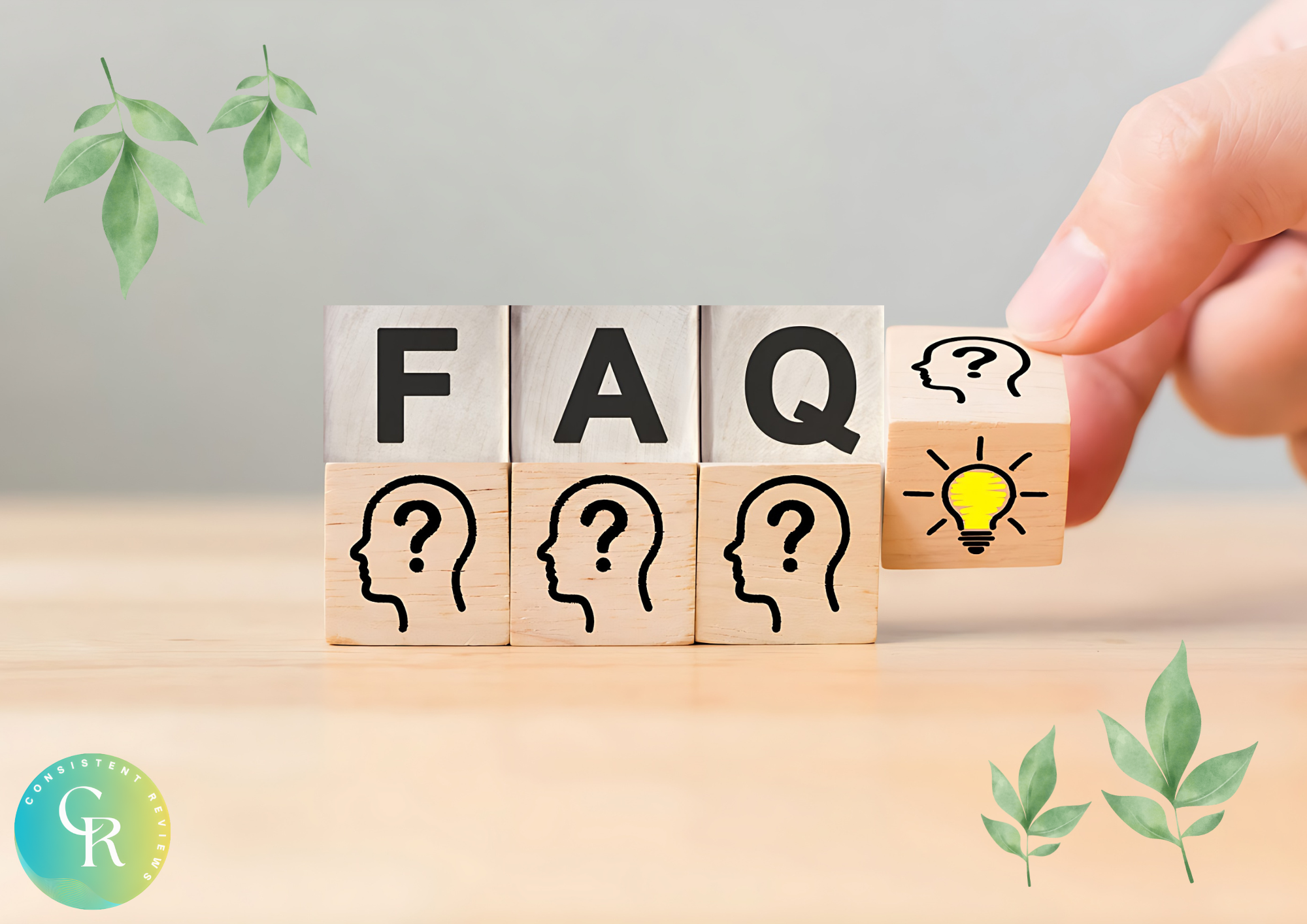
How long does it take to broil salmon fillets?
The cooking time for broiling salmon fillets typically ranges from 8 to 10 minutes, depending on their thickness and your desired level of doneness.
Can I broil salmon with the skin on?
Yes, broiling skin-on salmon helps to keep the fish moist during cooking and can be easily removed afterward if preferred.
What are some good seasonings for broiled salmon?
A good seasoning blend for salmon might include kosher salt, black pepper, garlic powder, onion powder, smoked paprika, and brown sugar. Fresh herbs, lemon juice, and soy sauce are also great for adding flavor.
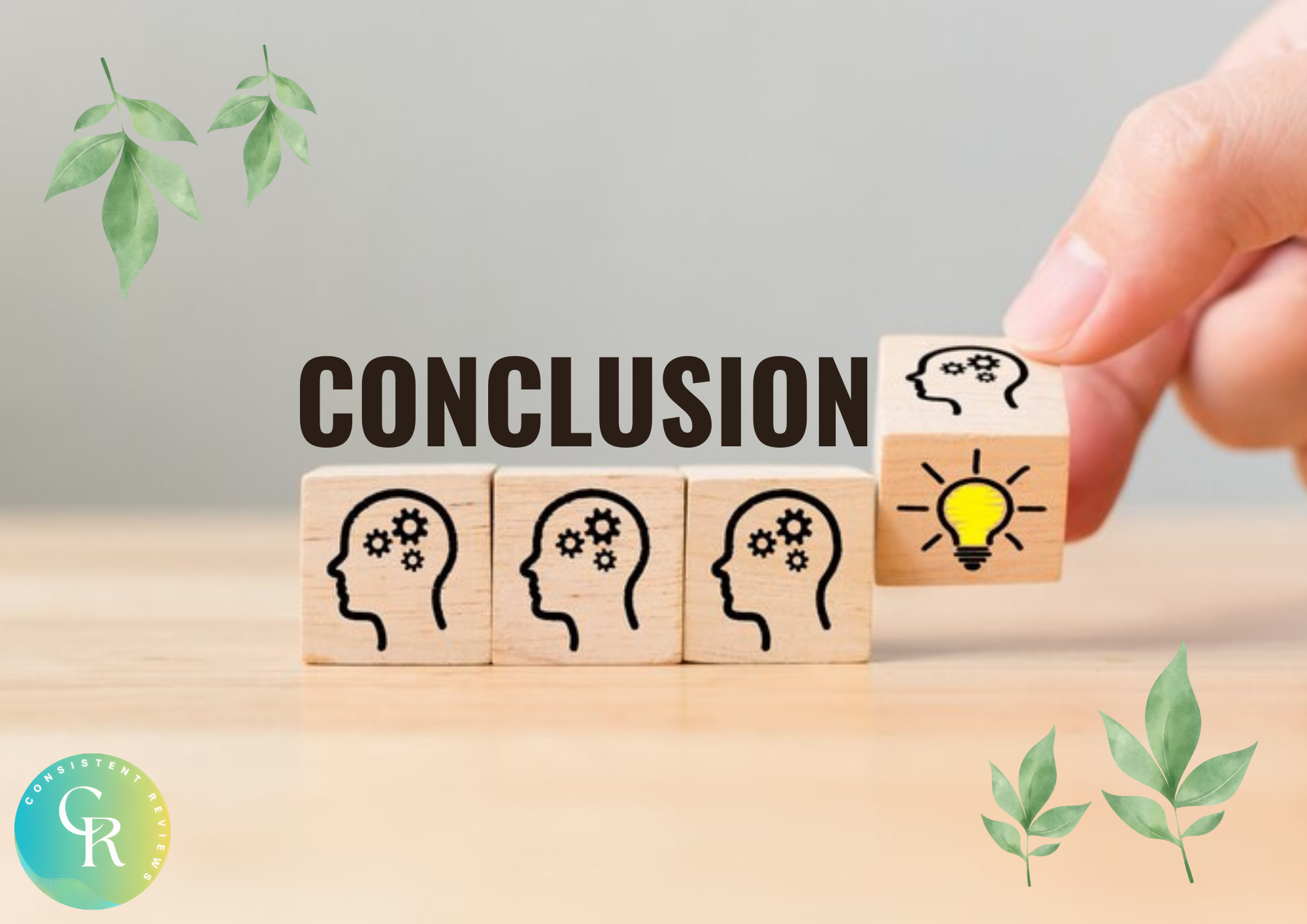
Broiling salmon is a simple and versatile cooking method that results in perfectly cooked, flaky, and flavorful fish. By following these steps and tips, you can create a delicious meal that's both nutritious and satisfying. Remember to select quality salmon fillets, season them to your taste, and watch the cooking time closely for the best results.
